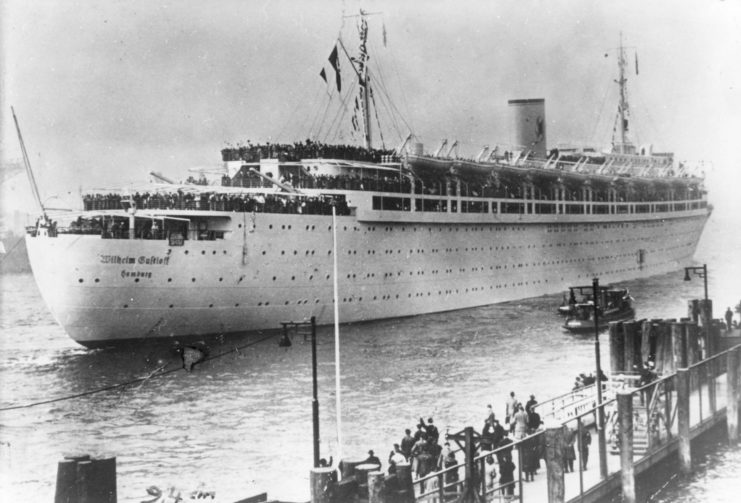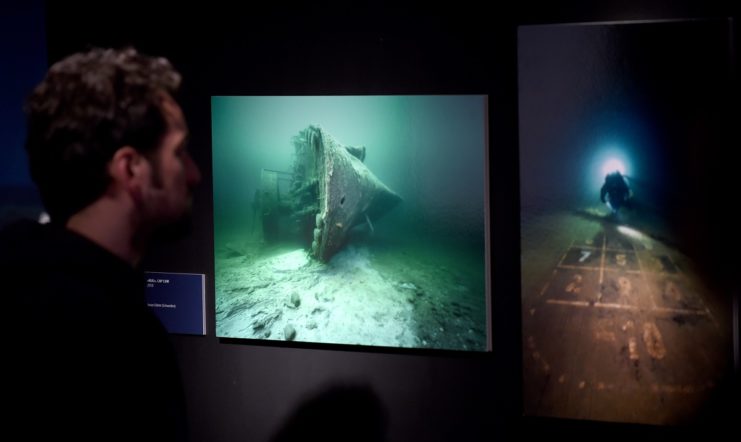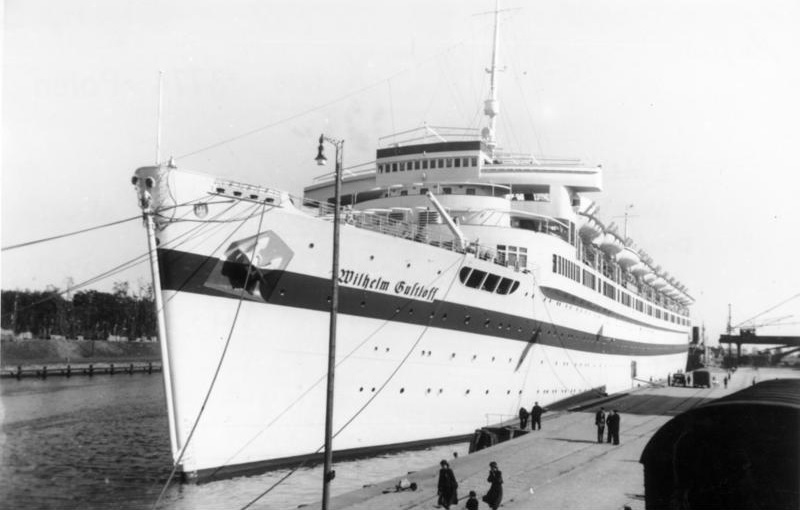In January 1945 a German transport ship carrying thousands of civilian refugees from northern Europe was sunk in the Baltic Sea. She was torpedoed by a Soviet submarine and went down with an enormous amount of lives. To this day, the event remains the largest loss of life in a single ship sinking in history. This vessel is MV Wilhelm Gustloff.
Although at the time of sinking Wilhelm Gustloff was a transport ship, she was originally designed as a cruise ship.
Origin

The ship was designed and built for the Kraft durch Freude (Strength Through Joy) organization. This state-operated organization was a Nazi effort to improve their public image and show off the benefits of Nazism. It offered workers affordable leisure opportunities like holidays, resorts, and cruises. Formed in 1933, it was actually a highly successful operation throughout the 1930s, becoming the largest tourism organization in the world. Its success continued until WWII began.
Wilhelm Gustloff was built to carry out cruises and other activities for people using the Strength Through Joy organization. It was laid down in August 1936 and completed on March 15, 1938. The vessel was the organization’s fleet flagship.
Originally she was to be named Adolf Hitler, but Hitler decided that it would be named after Wilhelm Gustloff, a high-ranking Nazi who had been recently assassinated. He made the decision after sitting next to Gustloff’s widow at the memorial service.
When complete she displaced over 25,000 tons and measured 208.5 m (684 ft 1 in) in length.
She started her first passenger voyage in late March 1938. On April 4 Wilhelm Gustloff received an SOS call from the small coal freighter Pegaway taking on water in a storm. The large vessel made her way to the Pegaway and lowered an oar-powered lifeboat to collect the stranded crew.
However, the rough seas battered the small, engineless lifeboat, a situation that also became an emergency. Wilhelm Gustloff lowered a second lifeboat – powered by an engine – which successfully collected both the crew of Pegaway and the crew from the first lifeboat.
Her official maiden voyage began on April 21, with the ship participating in a group cruise to the Madeira Islands. Shortly into the voyage the ship’s captain suddenly died of a heart attack. Captain Carl Lübbe was replaced by Friedrich Petersen.
Wilhelm Gustloff spent the next year on cruises all over Europe, transporting more than 80,000 passengers.
In September 1939 Wilhelm Gustloff’s career as a cruise ship ended, as she operated as a hospital ship until November 1940. She was then painted in a standard naval grey color and functioned as a barracks ship for U-boat crews in the port of Gdynia, Poland. She remained moored up here for the next four years.
WWII
Wilhelm Gustloff’s next, and final major action came in January 1945. The war was all but over for Germany, and it was now a case of trying to escape from the claws of the rapidly approaching Red Army. Operation Hannibal was a major German operation that evacuated around 1 million German civilians and soldiers across the Baltic Sea to the relative safety of Germany and its occupied territories.
Wilhelm Gustloff was loaded with civilians, soldiers, SS officials, and their families as well as scientists at Gotenhafen. She left the port on January 30.
The exact number of people on board the ship on this voyage is unknown, but the estimates are staggering. According to the ship’s own lists, she had over 6,000 people on board (she was designed to carry a maximum of less than 1,500). However, the urgency of the evacuation meant most vessels fled with far more passengers than were officially counted. One estimate states that 10,580 were on board, 9,000 of which were civilians.
After leaving the port the ship’s crew disagreed with the best course of action to ensure she arrived at her destination safely. Wilhelm Gustloff’s captain (the same man who took command on the Madeira Islands cruise) decided to travel in deep waters, and switch on the vessel’s lights to prevent collisions in the dark.
Soon into the journey the Soviet Stalinets-class submarine S-13 found Wilhelm Gustloff and tailed her for two hours. She fired four torpedoes at the overloaded ship at around 9 pm. One torpedo became lodged in its tube, but the other three launched successfully. All three struck Wilhelm Gustloff, causing instant mayhem inside. Remember, the ship had over four times more people on board than the Titanic, while being significantly smaller.
The ensuing panic among passengers trying to escape trapped many inside the doomed vessel. She quickly started listing to port, trapping even more.

The temperature that night was between -18 °C and -10 °C, with ice floes on the surface of the sea. The ice-cold conditions froze her lifeboats in place, stopping them from even being deployed.
Those who were able to escape the ship were met with the hypothermia-inducing temperatures of the ocean.
In all, around 9,600 people died in the disaster. This makes the destruction of Wilhelm Gustloff the largest loss of life in the sinking of any single ship.
Less than a week after the sinking, S-13 sank another ship, General von Steuben, killing a further 4,500 people.
